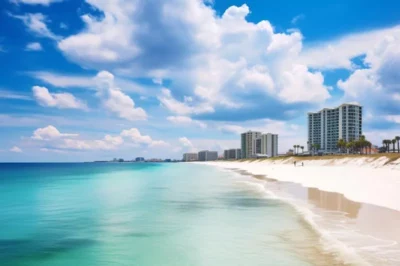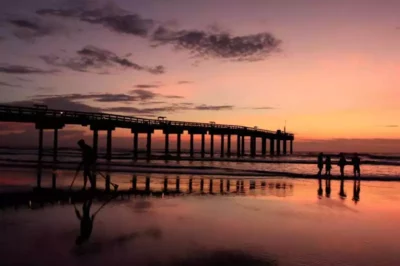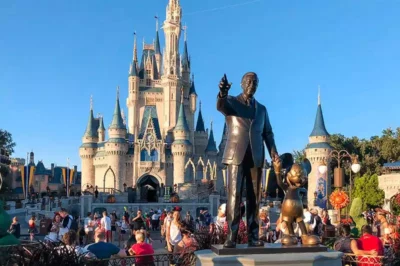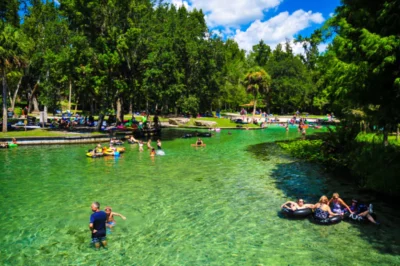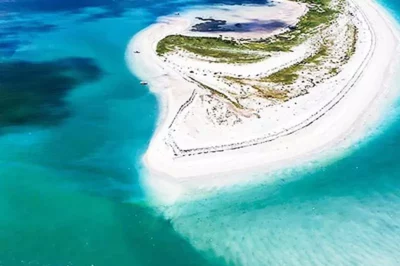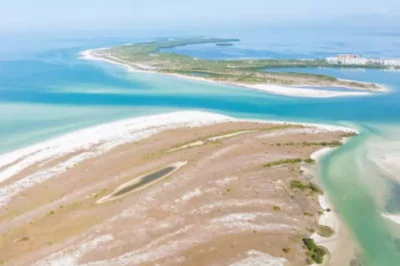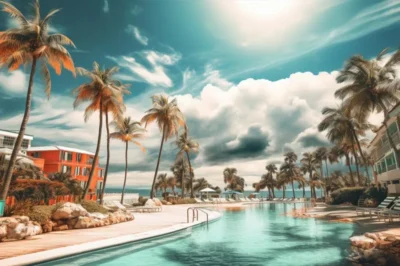- Flora and Fauna
- Camping in Everglades National Park
- Boat Rides in Everglades National Park
- Everglades National Park Kayaking
- Main Attractions and Landmarks
- Shark Valley
- Ernest Coe Visitor Center
- Flamingo Visitor Center
- Pa-hay-okee Overlook
- Hiking
- Other popular activities
Everglades National Park: Airboat Tours and Rides
Once upon a time, in the land of swamps and wetlands, the idea of preserving this mesmerizing wonder called the Everglades was born. In the early 20th century, advocates like Marjory Stoneman Douglas fought tirelessly to protect this ecological gem from the clutches of human interference.
Their dedication paid off, and in 1947, Everglades National Park was established, forever safeguarding the magical tapestry of flora and fauna unique to this corner of the world.
Flora and Fauna
The Everglades, often referred to as the “River of Grass,” is a living, breathing masterpiece of biodiversity. Delicate orchids and air plants adorn the trees, while the mighty sawgrass stands tall, dominating the landscape.
The fauna is equally captivating, with the powerful American alligator ruling the waterways, and the elusive Florida panther stalking the shadows of the pinelands. This intricate web of life weaves together a symphony of colors, sounds, and shapes, creating a world unlike any other.

Camping in Everglades National Park
Camping in Everglades National Park is an unforgettable way to immerse yourself in the park’s diverse ecosystems and enjoy its natural beauty. There are a variety of camping options available, including front-country campgrounds, backcountry campsites, and even a few cabins. Let’s explore these options in detail.
Front-country campgrounds: There are two primary front-country campgrounds in Everglades National Park, both of which offer easy access to the park’s attractions, restrooms, and potable water.
- Long Pine Key Campground: Located approximately 7 miles from the Ernest Coe Visitor Center, this campground offers 108 drive-up sites nestled among the pine and palmetto trees. Facilities include restrooms, cold-water showers, and picnic tables. Open seasonally from November through May, the campground operates on a first-come, first-served basis.
- Flamingo Campground: Situated near the Flamingo Visitor Center, Flamingo Campground offers a variety of camping options, including tent sites, RV sites, and eco-tents. Facilities include restrooms, cold-water showers, picnic tables, and a dump station. The campground is open year-round, with reservations available during the busy season (November through April) and sites available on a first-come, first-served basis during the off-season.
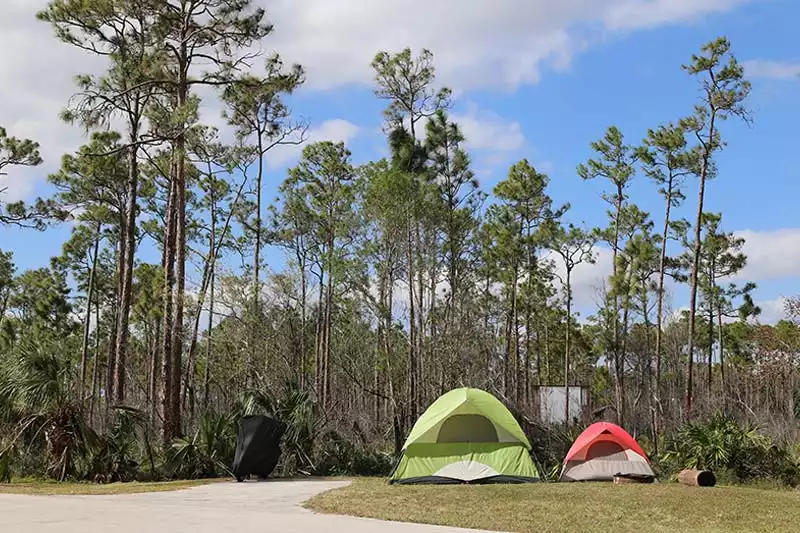

Backcountry camping: For a more remote and adventurous experience, backcountry camping is available throughout the park. These campsites are accessible only by boat or foot and are scattered across various ecosystems, including coastal sites, chickees (elevated wooden platforms), and ground sites.
- Permits: A backcountry permit is required for all backcountry camping and can be obtained at the Flamingo, Gulf Coast, or Ernest Coe visitor centers. Permits are issued on a first-come, first-served basis and should be acquired the day before or the day of your trip.
- Planning: Backcountry camping in the Everglades requires careful planning, knowledge of the park’s rules and regulations, and appropriate equipment. Be prepared for unpredictable weather, insects, and tidal fluctuations, and always practice Leave No Trace principles.
Cabins: A limited number of cabins are available for rent at the Flamingo area of the park. These rustic cabins offer basic amenities, including beds, a kitchenette, and a private bathroom with a shower. Cabins are located near the Flamingo Marina, providing easy access to boat rentals, fishing, and other recreational activities.
- Reservations: Cabin reservations can be made through the Flamingo Adventures website or by phone. It’s essential to book well in advance, as the cabins are popular and fill up quickly.
Boat Rides in Everglades National Park
Everglades National Park airboat tours offer visitors an exhilarating and unforgettable way to explore the wild beauty of the park’s vast wetlands. These iconic flat-bottomed boats, powered by a large fan, are uniquely suited to navigate the shallow waters and diverse ecosystems of the Everglades. Hold on tight as we dive into the details of this thrilling adventure.
The Airboat Experience: As you board the airboat, anticipation builds, and your heart races with excitement. The powerful engine roars to life, and the propeller whirs as you set off on your journey.
The airboat skims effortlessly over the surface of the water, weaving through a maze of sawgrass marshes and mangrove forests. The wind rushes past you, and the landscape transforms before your eyes, offering a glimpse into the untamed wilderness of the Everglades.
Wildlife Encounters: One of the highlights of an airboat tour is the opportunity to witness the park’s abundant wildlife up close. Keep your eyes peeled for the powerful American alligator lurking beneath the water’s surface, or the elegant wading birds stalking the shallows in search of a meal.
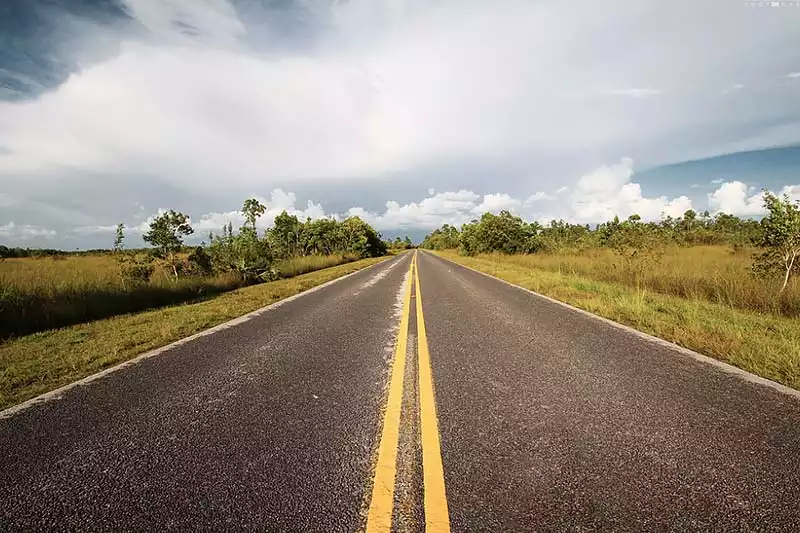
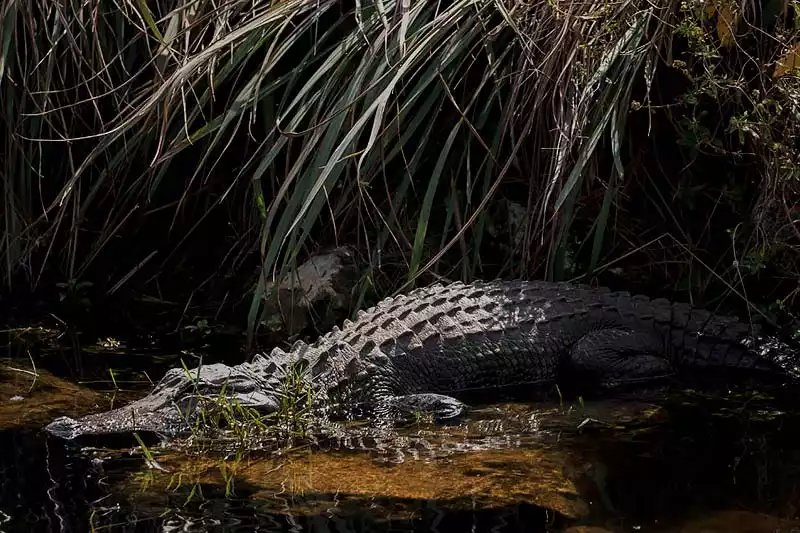
You might even spot a playful otter or the occasional turtle basking in the sun. Your knowledgeable airboat captain and guide will share fascinating facts about the creatures you encounter, offering a deeper understanding of their lives and the delicate balance of the Everglades ecosystem.

Exploring Unique Ecosystems: The Everglades boasts a rich tapestry of ecosystems, from freshwater sloughs and sawgrass marshes to mangrove forests and cypress swamps. Airboat tours provide access to these diverse habitats, many of which are otherwise difficult to reach.
As you venture deeper into the park, you’ll gain an appreciation for the complexity and interconnectedness of these ecosystems and the crucial role they play in supporting the park’s wildlife and plant communities.
Choosing an Airboat Tour: While airboat tours are not permitted within the boundaries of Everglades National Park, several reputable operators offer tours in the surrounding areas, such as the Everglades Alligator Farm, Everglades Safari Park, and Coopertown Airboats.
These tours often provide various options to suit your interests and schedule, ranging from short 30-minute excursions to longer, more in-depth explorations. Some operators also offer private airboat tours for a more personalized experience.
Before embarking on your airboat adventure, it’s essential to come prepared. Dress in comfortable, weather-appropriate clothing, and don’t forget to apply sunscreen and insect repellent.
Sunglasses and a wide-brimmed hat will help protect your eyes and face from the sun’s glare. Airboat rides can be noisy, so many operators will provide ear protection or recommend that you bring your own.
Everglades National Park Kayaking
Kayaking in Everglades National Park offers an immersive experience, allowing you to explore the park’s diverse ecosystems up close and at your own pace. Paddling through the park’s tranquil waterways brings you face-to-face with the unique beauty of the Everglades, from the vast sawgrass marshes to the intricate mangrove forests.
Canoe and kayak trails
Everglades National Park boasts a vast network of canoe and kayak trails that cater to paddlers of all experience levels. Some popular trails include:
- Nine Mile Pond Canoe Trail: This 5-mile loop takes you through mangrove-lined channels and freshwater marshes, providing ample opportunities for wildlife sightings.
- Hell’s Bay Canoe Trail: A more challenging 3.5-mile paddle to a chickee campsite, this trail weaves through a maze of mangroves and requires good navigational skills.
- Noble Hammock Canoe Trail: Ideal for beginners, this 2-mile loop offers a gentle paddle through freshwater marshes and mangrove tunnels.
- Wilderness Waterway: For the more adventurous, this 99-mile route stretches between Flamingo and Everglades City, requiring several days to complete and offering a true backcountry experience.
Guided tours: For those seeking a guided kayaking experience, various outfitters and tour companies offer guided trips led by knowledgeable naturalists. These tours can range from a few hours to multi-day expeditions and typically include instruction, equipment, and insight into the park’s unique flora and fauna.
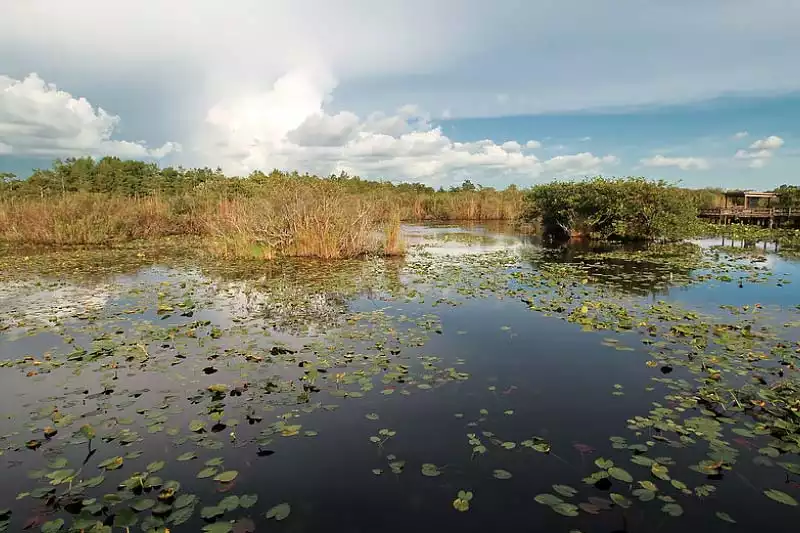
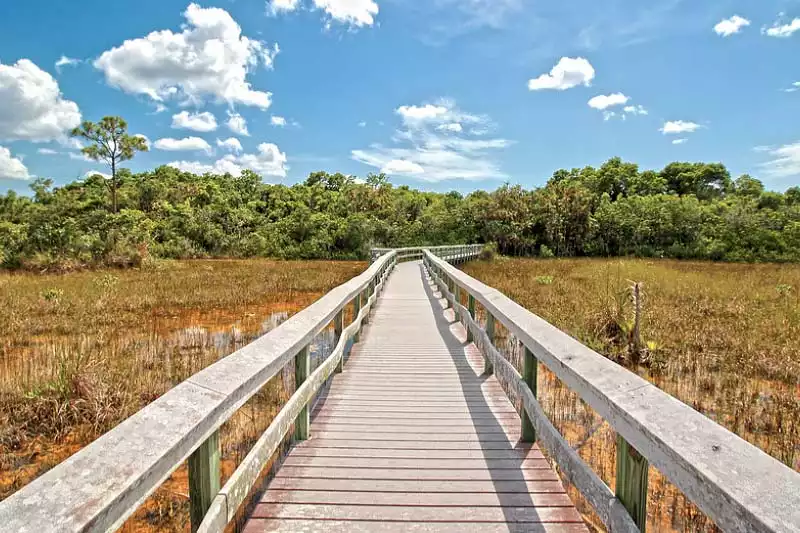
Rentals and permits: Kayak rentals are available at the Flamingo Marina and the Gulf Coast Visitor Center. If you’re planning to bring your own kayak, you’ll need to obtain a backcountry permit if you plan to camp overnight in the park. Permits can be obtained at the Flamingo and Gulf Coast Visitor Centers or the Ernest Coe Visitor Center.
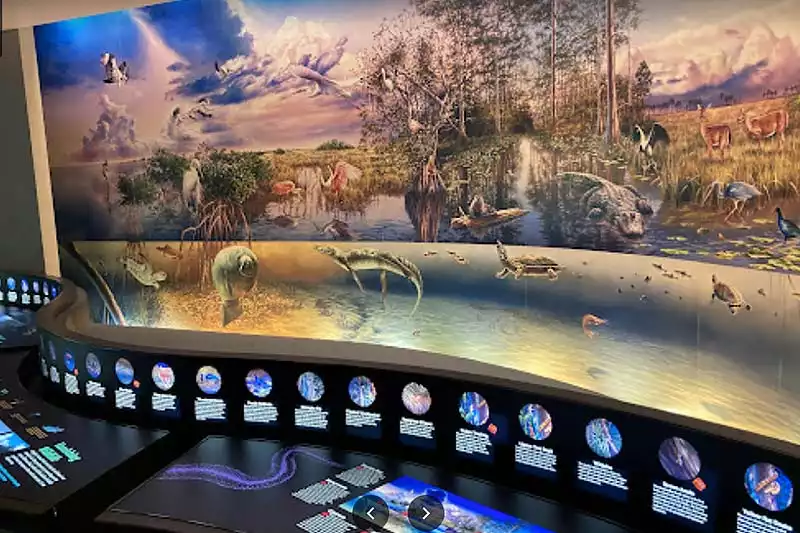

Safety and preparation: Kayaking in the Everglades can be a challenging and unpredictable experience. Make sure to familiarize yourself with the park’s rules and regulations, check the weather forecast, and plan your route carefully. Always carry a map, compass, and GPS, and let someone know your planned itinerary. Bring adequate water, food, and sun protection, and be prepared for the possibility of insects, particularly during the wet season.
Wildlife encounters: One of the greatest joys of kayaking in the Everglades is the chance to observe the park’s abundant wildlife up close. From alligators and manatees to wading birds and dolphins, keep your eyes peeled for the many species that call the park home. Remember to maintain a safe distance from wildlife and never feed or disturb the animals.
Main Attractions and Landmarks
Shark Valley
In the heart of the Everglades lies Shark Valley, a realm of wonder and mystery, where a 15-mile loop road awaits to take you on an unforgettable journey. Hop on a bicycle or board the popular Shark Valley Tram Tour, and be prepared to witness a world of diverse ecosystems, from freshwater sloughs to hardwood hammocks. The Shark Valley Observation Tower, the crown jewel of this adventure, offers a panoramic view of the Everglades, painting a breathtaking picture of this unparalleled landscape.

Ernest Coe Visitor Center
The gateway to the Everglades, the Ernest Coe Visitor Center, stands as a beacon of knowledge and inspiration for park visitors. Here, you can explore interactive exhibits, learn about the park’s complex ecosystem, and gather valuable information on trails, tours, and activities.
Don’t miss the opportunity to attend ranger-led programs or watch the educational film, “River of Life,” which will deepen your understanding of the park’s history and significance.
Flamingo Visitor Center
Nestled at the southern tip of the Everglades, where the land meets the sea, the Flamingo Visitor Center is a hub of activity and exploration. From here, you can embark on a boat tour through the mangrove forests or rent a kayak to glide along the serene waterways.
Keep an eye out for the vibrant pink feathers of the Roseate Spoonbill or the playful antics of manatees. The nearby Flamingo Marina offers fishing and boating opportunities, while the Eco Pond and nearby trails provide exceptional birdwatching and wildlife viewing experiences.
Pa-hay-okee Overlook
A short drive from the Ernest Coe Visitor Center, the Pa-hay-okee Overlook offers a mesmerizing view of the expansive sawgrass prairies. Standing on the elevated boardwalk, you’ll be enchanted by the seemingly endless sea of grass, swaying gently in the breeze. The horizon seems to stretch into infinity, and the sunsets here are truly magical, painting the sky with a palette of fiery hues.
Hiking
With a network of trails winding through diverse landscapes, the Everglades is a hiker’s delight. Traverse the Pinelands on the Long Pine Key Trail, meander through the lush Mahogany Hammock, or explore the cypress domes of the Gumbo Limbo Trail. Each trail offers a unique glimpse into the park’s ecosystems and the chance to discover hidden wonders.


- Anhinga Trail: Located near the Royal Palm Visitor Center, the Anhinga Trail is a 0.8-mile boardwalk loop that meanders through a freshwater sawgrass marsh. This wheelchair-accessible trail offers excellent opportunities for birdwatching and spotting alligators, turtles, and other wildlife.
- Pinelands Trail: The Pinelands Trail is a 0.4-mile loop that takes you through a dense pine forest dotted with colorful wildflowers and saw palmettos. Found off the main park road, the trail provides a glimpse into the fire-dependent pineland ecosystem and is a great short hike for all ages.
- Pa-hay-okee Overlook Trail: This 0.16-mile boardwalk loop leads to an elevated observation platform, offering panoramic views of the vast sawgrass prairies. Located off the main park road, the trail is wheelchair-accessible and provides interpretive signs to help you understand the surrounding landscape.
- Gumbo Limbo Trail: Situated near the Royal Palm Visitor Center, the Gumbo Limbo Trail is a 0.4-mile loop that winds through a lush, tropical hardwood hammock. This shaded, well-maintained path is an excellent option for a leisurely walk amid diverse vegetation, including the park’s namesake gumbo limbo trees.
- Long Pine Key Trails: Located at the Long Pine Key Campground, these interconnected trails offer various hiking options through the pinelands, ranging from 1 to 7 miles. The area features picnic facilities, restrooms, and a campground, making it an excellent destination for a day of hiking and relaxation.
Other popular activities
Wildlife watching: The Everglades is a paradise for wildlife enthusiasts, offering opportunities to encounter an impressive array of creatures, from the stealthy American alligator to the graceful Great Egret.
Observe the fascinating behaviors of wading birds along the Anhinga Trail, or venture to Eco Pond near Flamingo for a chance to spot the vibrant Roseate Spoonbill. Keep your eyes peeled for the rare and elusive Florida panther or the gentle West Indian manatee as you immerse yourself in this vibrant tapestry of life.
Biking: Feel the wind in your hair and the sun on your face as you embark on a cycling adventure through the Everglades. The 15-mile Shark Valley Loop offers stunning vistas and wildlife encounters, while the Old Ingraham Highway, an 11-mile journey from the Ernest Coe Visitor Center to Flamingo, takes you through a mosaic of habitats. Rent a bike or bring your own and set off on a journey that will leave you breathless with awe.
Fishing: Anglers will find their haven in the Everglades, with both freshwater and saltwater fishing opportunities available.
Cast a line in search of snook, redfish, and tarpon in the estuarine areas or try your luck at catching largemouth bass in the freshwater marshes. Be sure to follow all regulations and obtain the necessary permits before embarking on your fishing adventure.
Best Time to Visit
Just as the kaleidoscope of colors in the Everglades changes with the seasons, so too does the ideal time to visit this enchanting park. The dry season, typically from December to April, offers a pleasant reprieve from the sweltering summer heat and drenching rains.
With the water levels receding, wildlife is drawn to the remaining pools, offering visitors a front-row seat to the symphony of nature. However, the wet season, from May to November, unveils a unique beauty, as the land is transformed by rain, the chorus of thunderstorms, and the dance of lightning.
What to Pack
Embarking on an adventure to the Everglades is like stepping into a world where time stands still, and nature reigns supreme. To fully embrace this experience, it’s essential to pack wisely.
Bring lightweight, breathable clothing, and don’t forget to include long sleeves and pants to protect against both the sun’s fierce rays and the ever-present mosquitoes.
A trusty hat and sunglasses will shield your eyes from the sun’s glare, while sturdy shoes will keep your feet firmly planted on the ground. Finally, arm yourself with a reusable water bottle, sunscreen, and insect repellent, and you’ll be ready to conquer the wild beauty of the Everglades.
How to Get to Everglades National Park?
Everglades National Park spans across 1.5 million acres of South Florida, encompassing a variety of ecosystems and offering diverse experiences for visitors. To help you plan your visit, let’s explore the various entrances and options for getting to this captivating natural wonder.
Main Entrance (Ernest F. Coe Visitor Center) – Homestead
The main entrance to Everglades National Park is located near the city of Homestead, approximately 45 minutes southwest of Miami. To reach this entrance, take the Florida Turnpike (Route 821) south until it merges with US 1 at Florida City. Turn right at the first traffic light onto Palm Drive (State Road 9336/SW 344th St) and follow the signs to the park entrance.
Flamingo Visitor Center – Flamingo
The Flamingo Visitor Center is located at the end of the main park road (State Road 9336) in Flamingo, approximately 38 miles from the main entrance near Homestead. This visitor center offers information, exhibits, camping facilities, and access to boat tours and rentals. The Flamingo area is a popular destination for wildlife watching, fishing, and exploring the park’s coastal ecosystems.
Shark Valley Visitor Center – Miami
Shark Valley is located on the Tamiami Trail (US Highway 41), about 30 miles west of Miami. The Shark Valley Visitor Center provides information, exhibits, and access to the popular 15-mile Shark Valley Loop, where you can hike, bike, or take a tram tour to observe the park’s abundant wildlife.
Gulf Coast Visitor Center – Everglades City
The Gulf Coast Visitor Center is situated in Everglades City, about 75 miles west of Miami and 85 miles south of Naples. This entrance provides access to the Ten Thousand Islands, a vast network of mangrove islets and waterways. The Gulf Coast area is popular for boating, kayaking, canoeing, and wildlife watching.
Conclusion
Everglades National Park is a remarkable destination, offering a unique combination of diverse ecosystems, abundant wildlife, and various recreational activities.
From the exhilarating airboat tours to serene kayaking adventures and comfortable campgrounds, there’s something for everyone in this extraordinary park. A visit to the Everglades is a journey into a world unlike any other, leaving you with a deep appreciation for the beauty and complexity of nature.



